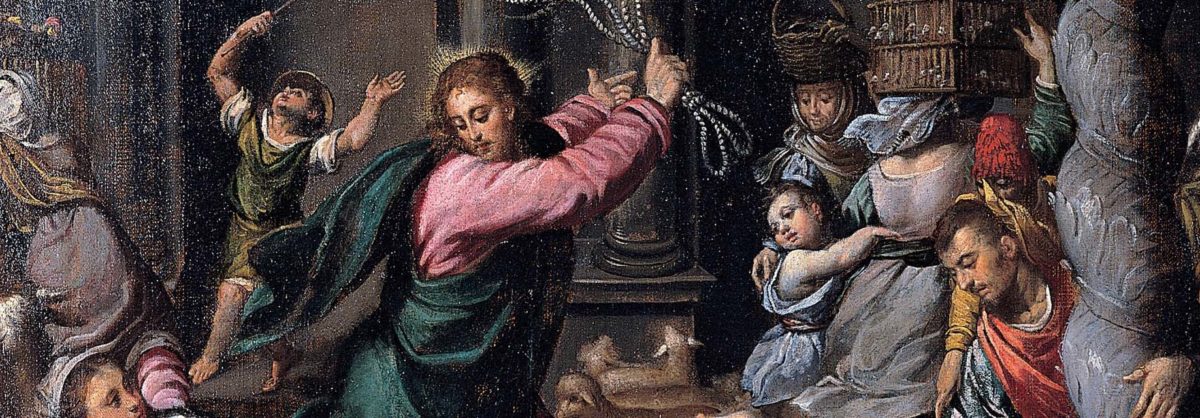When I think of Jesus, anger is the last word that comes to my mind. I’m much more comfortable talking about him in terms of love, humility, mercy, and forgiveness — but rage?
That’s why I find today’s Gospel, in which John recalls the moment in the temple when Jesus becomes enraged, so unsettling. This isn’t just the anger that might cause you to yell, or storm out of a room. No, this anger causes Jesus to flip tables; it leads him to make a whip out of cords to drive people and animals out of the temple.
Why then, does John include this account? To understand the full meaning of the story, we must look beyond this dramatic moment.
In John’s Gospel, the cleansing of the temple is the first act of Jesus’ public ministry (the wedding at Cana was his first miracle). John notes that Jesus was at the temple because Passover — one of the most sacred Jewish feasts which commemorates Israel’s liberation from slavery in Egypt — was near.
While visiting the temple, Jews would sacrifice an animal, which explains why animals were being sold. But when he arrives, Jesus is outraged to find that the temple—a sacred place of prayer—had been turned into a marketplace, a place to extort pilgrims.
What happens next is especially important. Jesus tells the onlookers, “take these out of here, and stop making my Father’s house a marketplace.” My Father’s house. Here, Jesus reveals publicly for the first time his relationship with God: God is his Father; He is the Son. He is revealing himself as the Messiah.
The Jews seem to be shocked by Jesus’ outrage and ask for a reason for his actions. It’s as if they’re asking, “You need to justify yourself… are you a prophet?” Jesus responds, “Destroy this temple and in three days I will raise it up.”
Understandably, the Jews are confused. The temple had taken 46 years to build. Jesus would rebuild it in three days?
Of course, we have the privilege of knowing the whole story. In this moment, Jesus publicly foretells his Passion and Resurrection. He will be destroyed, He will die, but He will rise again.
Through his death, Jesus takes our sins upon himself. He is crucified so that we too might rise again. This is the wisdom of God, the Gospel we proclaim; which, as St. Paul notes in his First Letter to the Corinthians, is seen as foolishness and weakness — a stumbling block — to those who do not believe.
The season of Lent provides us a unique opportunity to look inward, and cleanse our own temple, so that Jesus may more perfectly dwell within us.
If we want to receive the gift of eternal life, it’s important that we consciously reflect on and ask forgiveness for the thoughts, words and actions that deface the temple of our souls.
One way this can be accomplished during Lent is by doing an examination of conscience, based on the Ten Commandments (which are outlined in today’s first reading), and before receiving the sacrament of Penance and Reconciliation.
St. Elizabeth Ann Seton recognized the power of God’s forgiveness. Upon confessing her sins as a Catholic for the first time, she wrote: “How awful are those words of unloosing after a thirty years’ bondage! I felt as if my chains fell, as those of St. Peter at the touch of the Divine Messenger. My God! What new scenes for my soul!”
It’s important to note that awful, for Elizabeth, meant full of awe. The words of absolution brought light to darkness, healing to pain, freedom from the chains of sin.
Most importantly, Mother Seton knew that in this sacrament, Jesus sees our hearts longing to be in relation with him. He cleanses and rebuilds the temples of our souls with love and mercy, not rage.
This reflection was previously published. Click here to view all Seton Reflections.
Image credit: Scarsellino, Driving of the Merchants from the Temple, Wikimedia Commons
CAITLIN SICA received her MA in Theology from the University of Notre Dame. You can learn more about Caitlin, and read her writing at www.caitlinsica.com.
